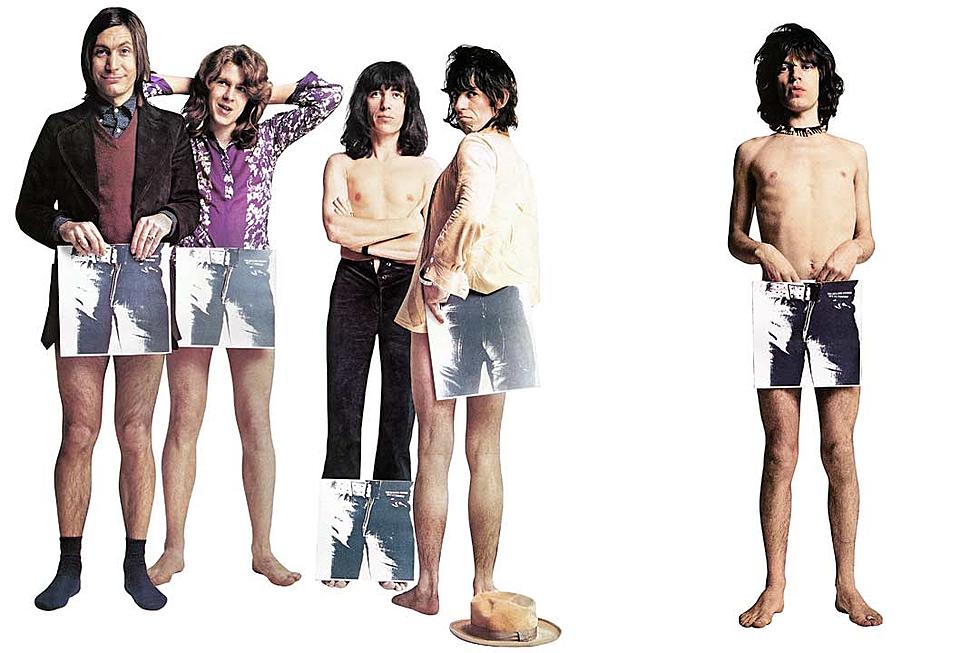
How the Rolling Stones Launched a New Era With ‘Sticky Fingers’
Reeling from the loss and sudden death of their early leader Brian Jones as well as the violent tragedy that overshadowed their free show at the Altamont Speedway, the Rolling Stones closed out the '60s under a dark cloud of turmoil.
Things were rocky on the business front for the band, too. They'd filled out their initial record contract with Decca and looked forward to starting their own label as a means to controlling their creative destiny while opening up other business avenues, but first they had to extricate themselves from former manager Allen Klein, who infamously ended up with the group's '60s copyrights through allegedly rather shady means. Additionally, they faced a crushing tax burden in their native U.K., which put them in the distinct position of being on the verge of financial ruin and one of the world's biggest rock bands.
In the midst of all this chaos, the Rolling Stones set about working on their follow-up to 1969's Let It Bleed. Unsurprisingly, it was neither quick nor cheap; in stark contrast to most albums of the day, the band's new LP — ultimately titled Sticky Fingers — reportedly cost more than $100,000 to record during more than a year's worth of work.
Which is not necessarily to say that the Fingers sessions were difficult. Jones' replacement, guitarist Mick Taylor, quickly proved himself a worthy addition to the lineup; co-founder Keith Richards later argued that Taylor's presence helped the group stay sane during the tour marred by Altamont.
"Mick Taylor being in the band on that '69 tour certainly sealed the Stones together again," wrote Richards in his Life memoir. "So we did Sticky Fingers with him. And the music changed — almost unconsciously. You write with Mick Taylor in mind, maybe without realizing it, knowing he can come up with something different. You've got to give him something he'll really enjoy. ... Some of the Sticky Fingers compositions were rooted in the fact that I knew Taylor was going to pull something great."
While Taylor's imprint was felt on portions of the album, other songs benefited from the same happy coincidences that had always seemed to work in the Stones' favor — like the record's opening track and eventual lead-off single, "Brown Sugar."
"I wrote that song in Australia in the middle of a field. They were really odd circumstances. I was doing this movie, Ned Kelly and my hand had got really damaged in this action sequence. So stupid," sighed singer Mick Jagger during an interview with Jann Wenner. "I was trying to rehabilitate my hand and had this new kind of electric guitar, and I was playing in the middle of the outback and wrote this tune."
Listen to the Rolling Stones' 'Brown Sugar'
Elsewhere on the album, the band continued its long homage to American music by emphasizing its country influences on songs like the second Sticky Fingers single, "Wild Horses."
"I love country music, but I find it very hard to take it seriously," Jagger told Wenner. "I also think a lot of country music is sung with the tongue in cheek, so I do it tongue in cheek. The harmonic thing is very different from the blues. It doesn’t bend notes in the same way, so I suppose it’s very English, really. Even though it’s been very Americanized, it feels very close to me, to my roots, so to speak."
Meanwhile, through it all, Jagger and Richards continued to refine their songwriting partnership, finding new ways to deepen and strengthen the creative chemistry that had always been at the heart of the Rolling Stones. As Richards later recalled, the Sticky Fingers songwriting sessions found them dividing the labor more loosely — and arguably more satisfyingly — than before.
"Mick writes more melodies now than he used to," Richards told Rolling Stone in the summer of 1971. "The first things, usually I wrote the melody and Mick wrote the words. It's not gotten like the Lennon-McCartney thing got, where they wrote completely by themselves. Every song we've got have pieces of each other in it. The only thing in Sticky Fingers I don't have anything to do with is 'Moonlight Mile,' 'cause I wasn't there when they did it. It was great to hear that because I was very out of it by the end of the album and it was like listening, really listening. It was really nice we were all surprised at the way that album fell together. Sticky Fingers – it pulled itself together."
Of course, pulling it together took more effort than the guys in the band were sometimes willing to acknowledge. According to tour security chief Jerry Pompili, things were so loose with the Stones that they didn't have lyrics written down for the new songs — and after the band started playing them live, he was commissioned to "drop a needle on them and try to figure out what the hell he was singing. Which was not really all that easy."
Continued Pompili, "I played the acetates over and over and wrote down all the lyrics I could understand by hand. Then I took the pages back … and Mick came into the office and looked at them and that got his memory going so he was able to fill in most of the blanks. We had one disagreement and it was on ‘Can’t You Hear Me Knocking.’ There was one line that sounded to me and everybody else like ‘Yeah, I’ve got flatted feet now, now, now,’ but Mick swore that was not what he had sung. He couldn’t remember what it was, so we just went with ‘Yeah, I’ve got flatted feet now, now, now.’"
Whatever Jagger happened to be singing, it worked. Released on April 23, 1971, Sticky Fingers rocketed to No. 1 on both sides of the Atlantic — and as tended to be the case with the Stones, the album was heralded not only for its songs, but for the non-musical controversies that went along with it, which in this case included a distinctive Andy Warhol-conceived cover shot of a man's crotch clad in tight jeans. The LP even included a zipper and a belt buckle that opened to reveal cotton briefs — and while the zipper itself annoyed retailers who said it damaged the vinyl, the packaging definitely did its job.
Not that the Stones needed any extra help attracting sales at this point. Whatever personal or business problems they happened to be coping with at the time, they were also riding a commercial and creative hot streak, and Sticky Fingers only continued it. "There's no real change of direction musically for the group," beamed Jagger to a press conference full of reporters the day the record arrived in stores. "But we all think it's the best album we have done."
Top 40 Blues Rock Albums
You Think You Know the Rolling Stones?
More From Ultimate Classic Rock









